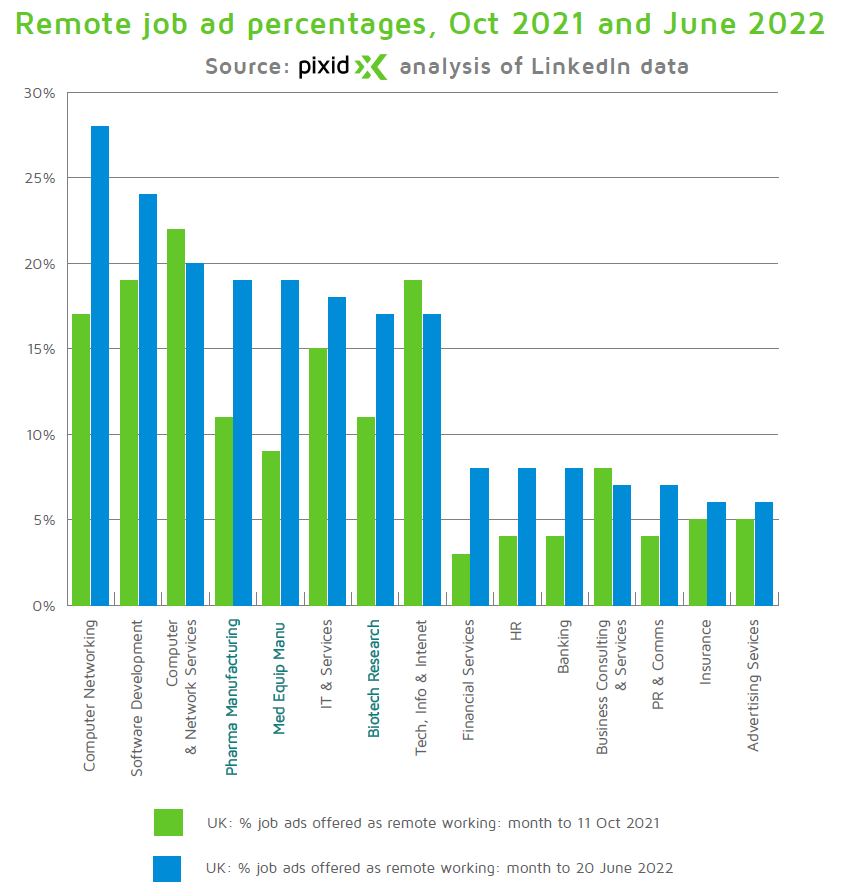From the frontline of the Covid-19 response, to finding new candidates in its aftermath, the Life Sciences Sector is adapting to find new talent solutions.
The pandemic impacted the flow of talent in many industry sectors, but the experience of the Life Sciences sector was unique. Here was an industry at the blunt end of the crisis, trying to deliver solutions while dealing with its impact. With successes hard won, the sector has been resilient, agile and is now busier than ever. Many sectors are talent short, but Life Sciences has taken a different approach to meeting its needs, adapting the way it works and widening its search for talent.
The 10-Year UK Strategy
Without question Life Sciences has dealt with an extremely challenging few years. The medical side of Covid, together with the impact of various lockdowns has been tough on healthcare organisations and individuals. Challenges continue: Life Science Industry News reported on the £5.9 billion package required for NHS England to clear the care backlog while there’s an addition £5 billion earmarked for health-related research and development work and an expansion of the Community Diagnostic Centre network.
This level of investment is to be expected: the UK government has high hopes for the sector, as seen in last year’s Life Sciences Vision report. This presents a 10-year strategy for the sector with the overarching aim for the UK to become “the leading global hub for life sciences”. In part, the vision builds on knowledge gained from the Covid-19 pandemic, but there are also specific projects here, including dementia research, early-stage diagnosis and treatment of diseases such as cancer and the prevention of cardiovascular diseases.
The Changing Talent Picture
The pandemic is not the only challenge to the sector’s workforce. Brexit and changes to IR35 – the rules around contractual work – have also left their mark. The usual candidates just aren’t there in the same numbers, and those who are may not be able to engage in the same way as they did pre-pandemic.
In response, the sector has become more flexible in its employment models, as well as reaching beyond the usual talent pools.
To some extent the experience of home working has been an inspiration. Processes have become decentralised – as the recruiter Kelly Life Sciences Europe note, two-thirds of European life sciences firms now plan to conduct virtual trials in the next three years. This will reduce costs, increase the speed of trials and make recruiting trial patients easier.
Pixid’s own research has found that in June 2022, together with the Tech sector, Life Sciences was leading the way in terms of remote job ads, with one in six (17%) opportunities being offered in this way. Prior to the pandemic, only around 1% of job adverts generally offered remote work.

But working like this requires new skills and a different approach to communication. According to Kelly Life Sciences there has been a significant increase in demand for digitally savvy candidates – people with experience in app development, user experience, wearable technology and so on.
The Impact of AI
Kelly also note that Artificial Intelligence and big data analytics are on the rise for the sector. The use of AI in healthcare across Europe alone has been forecast to save more than 400,000 lives, €200 billion and nearly two billion hours of HCP/clinician time a year.
However, this increasing reliance on advanced digital technology will also require sourcing the necessary human talent to maintain it. As a result, 40% of core skills are expected to change by 2025, according to Deloitte’s latest Global Life Sciences report.
New Openings?
In order to meet the demand for candidates who can realise these ambitions, Kelly says people with ‘limited, old or even no experience’ in Life Sciences may still be of interest to employers. A qualification or degree that requires very intensive study, for example, may demonstrate the required attitude and approach. Likewise, people who have worked in very focused, specialised roles may still be attractive. The sector is therefore casting its net wider for people who can deliver, even if this means that softer skills, such as communications, design and project management are not always present as they might be in the perfect candidate.
The fact that candidate demand is healthy and the sector is busy does not make the job any easier for recruiters and employers. However the ability to think differently about how people can work, where they can work and the type of skills they need to do that work is creating a freer and easier talent market which, with luck, will not hold back innovation and progress in delivering great solutions and services to patients.
by Daniel Kieve, Pixid UK & Ireland





